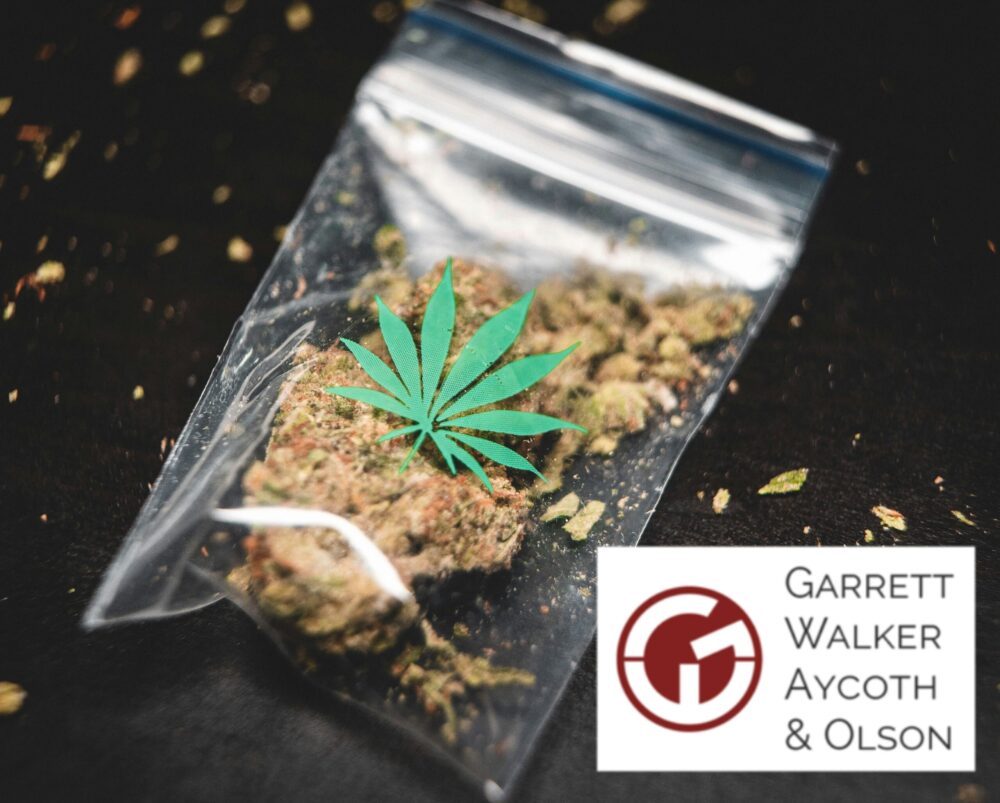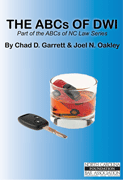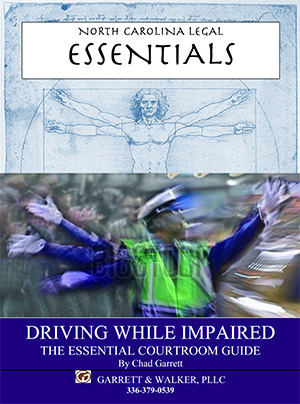Greensboro DWI Lawyer
Aconviction on charges of drunk driving can have serious consequences, including active prison time, driver’s license suspension,increased auto insurance rates, and a criminal record. Founding partner Chad Garrett is the author of a recently published definitive guide on the law of Driving While Impaired (DWI). Alcohol (N.C.G.S 20-4.01(1a)) – Any substance containing any form of alcohol, including ethanol, methanol, propanol, and isopropanol.
Driving a vehicle on a street, highway or public vehicular area with an alcohol concentration of 0.08 or more, or having any amount of a Schedule I controlled substance or its metabolites remaining in the body. On the date of the offense, offender must have 3 or more prior convictions pertaining to impaired driving within the last 10 years. In North Carolina, the offenses for those who drive while impaired are as follows:
- Impaired driving (N.C.G.S. 20-138.1)
- Habitual impaired driving (N.C.G.S. 20-138.5)
- This offense in classified as a Class F felony, and requires a minimum active term of no less than 12 months. Sentences run consecutively.
- Impaired driving in a commercial vehicle (N.C.G.S 20-138.2)
- Driving a commercial vehicle on a street, highway or public vehicular area with an alcohol concentration of 0.04 or more, or having any amount of a Schedule I controlled substance or its metabolites remaining in the body
- This is classified as a misdemeanor
- Operating a commercial motor vehicle after consumption ( N.C.G.S 20-138.2A)
- Driving a commercial vehicle on a street, highway or public vehicular area while consuming alcohol or with any alcohol concentration remaining in the body.
- Operating a school bus, activity bus, or child care vehicle after consumption (N.C.G.S. 20-138.2B)
- Driving a School bus, activity bus, or child care bus on a street, highway or public vehicular area while consuming alcohol or with any alcohol concentration remaining in the body.
- This is a Class 3 misdemeanor punishable by a penalty of $100.
- Operating a motor vehicle after consumption under the age of 21 (N.C.G.S. 20-138.3)
- While under the age of 21, driving a vehicle on a street, highway or public vehicular area while consuming alcohol or with any alcohol concentration remaining in the body.
- This is a Class 2 misdemeanor, and is not a lesser offense of impaired driving.
- Felony death by motor vehicle (N.C.G.S. 20- 141.4 (a1))
- This is a Class D felony; is not a lesser included offense of manslaughter or second degree murder.
- Felony serious injury by motor vehicle (N.C.G.S. 20-141.4(a3))
- Unintentionally causing the serious injury of another person while engaged in the act of impaired driving under N.C.G.S 138.1 or 138.2. Commission of the offense is the proximate cause of serious injury.
- This offense is a Class F felony
- Aggravated felony serious injury by motor vehicle (N.C.G.S 20-141.4 (a4))
- This Offense is classified as a Class E felony
- Unintentionally causing the serious injury of another person while engaged in the act of impaired driving under N.C.G.S 138.1 or 138.2. Commission of the offense is the proximate cause of serious injury, and has a prior offense involving impaired driving within the past seven years of the initial offense
- Aggravated felony death by motor vehicle (N.C.G.S 20-141.4 (a5))
- Unintentionally causing the serious injury of another person while engaged in the act of impaired driving under N.C.G.S 138.1 or 138.2. Commission of the offense is the proximate cause of serious injury, and has a prior offense involving impaired driving within the past seven years of the initial offense
- This offense is classified as a Class D felony. Sentencing in the aggravated range is required
- Repeat felony death by offender (N.C.G.S. 20-141.6 (a6))
- Unintentionally causing the death of another person while engaged in the act of impaired driving under N.C.G.S 138.1 or 138.2. Commission of the offense is the proximate cause of death, and has a prior conviction involving N.C.G.S 20-141.4(a1), 20-141.4 (a5), 14-17 or 14-18 and the basis of conviction was the unintentional death of another while engaged in impaired driving
- This offense is punished as if the defendant had been convicted of second degree murder
- Involuntary manslaughter (N.C.G.S 14-18)
- Voluntary manslaughter is a Class D felony.
- Murder (N.C.G.S 14-17)
- Maliciously kills another person while engaged in the act of impaired driving under N.C.G.S 138.1 or 138.2.
- Second degree murder charged pursuant to impaired driving is a Class B2 felony. The malice element must be met through a showing of recklessness that rises to the level of malice and without regard for human life.
Sentencing is determined by investigating and pooling together a group of factors that add to or detract from the intent in committing the crime
- Grossly Aggravating Factors: A prior conviction for an offense involving impair driving if:
- The offense occurred within seven years before the date of the offense for which the convicted is being sentenced
- The conviction occurred within district court; the case was appealed to superior court, the appeal has been withdrawn, or the case has been remanded back to district court, and a new sentencing hearing has not been held.
- Examples of Grossly Aggravating Factors – Driving by the defendant at a time when license was revoked; Serious injury of another person is a result of the defendant driving at the time of the crime
- Aggravating Factors: Gross impairment of drivers faculties while driving or an alcohol concentration of .15 or more within a relevant time after driving. This chemical analysis shall be enough to prove alcohol concentration and is not subject to any form of modification
- Mitigating Factors: Slight impairment of the defendants faculties resulting solely from alcohol, with no concentration exceeding 0.09 at any relevant time after driving.
- Level 1 Punishment: A defendant charged with level 1 punishment may be fined up to $4,000 and shall be sentenced to a term of imprisonment that includes a minimum of no less than 30 days and no more than 24 months.
- Level 2 Punishment: A defendant charged with level 2 punishment may be fined up to $2,000 and shall be sentenced to a term of imprisonment that includes a minimum of no less than seven days and no more than 12 months.
- Level 3 Punishment: : A defendant charged with level 3 punishment may be fined up to $1,000 and shall be sentenced to a term of imprisonment that includes a minimum of no less than 72 hours and no more than 6 months.
- Level 4 Punishment: A defendant charged with Level 4 punishment may be fined up to $500 and shall be sentenced to a term of imprisonment that includes a minimum of no less than 48 hours and no more than 120 days. The sentence can be suspended. However, the suspended shall include the condition that the defendant:
- Be imprisoned for a term of 48 hours as a condition of special probation;
- Perform 48 hours of community service as a condition of special probation;
- Repealed by Session Laws 2006-253, s. 23, effective December 1, 2006, and applicable to offenses committed on or after that date.
- Any combination of these conditions.
- Level 5 Punishment: A defendant charged with Level 5 punishment may be fined up to $200 and shall be sentenced to a term of imprisonment that includes a minimum of no less than 24 hours and no more than 60 days.
License Revocation and Driving Privileges:
Implied Consent: A concept governing the privilege to drive on the streets, highways, and public vehicular areas in North Carolina. By exercising this privilege, a driver implicitly consents to a chemical analysis if charged with one of the “implied consent offenses.” These include an offense of impaired driving, an offense under N.C.G.S 20-114.4(a2) (misdemeanor death by motor vehicle), or any alcohol-related offense made subject to the implied consent law.
Limited Driving Privileges – available for most first time impaired driving offenders.
Call 336-379-0539 or contact us online today for a free consultation.
Criminal Defense Lawyer Posts

How to Get DUI Charges Reduced or Dismissed in North Carolina | Garrett, Walker, Aycoth & Olson
June 4, 2024How Can I Get My DUI Charges Reduced or Dismissed in North Carolina? Facing a DUI (Driving Under the Influence) charge in North Carolina can be a daunting experience. However, ...

What Are the Penalties for a First-Time DUI Offense in NC?
June 4, 2024What Are the Penalties for a First-Time DUI Offense in Greensboro, NC? If you are facing a first-time DUI (Driving Under the Influence) offense in Greensboro, NC, understanding the potential ...

Affordable Criminal Defense Lawyer in Greensboro, NC | Flexible Payment Plans
June 4, 2024Criminal Lawyers with Payment Plans in Greensboro, NC Garrett, Walker, Aycoth & Olson: Your Trusted Criminal Defense Team with Flexible Payment Options When facing criminal charges, finding a skilled and ...

What is a PWISD Charge in NC? | Garrett, Walker, Aycoth & Olson, Attorneys at Law
June 3, 2024What is a PWISD Charge in NC? When facing criminal charges in North Carolina, understanding the nature of the allegations against you is crucial. One such charge that many individuals ...



